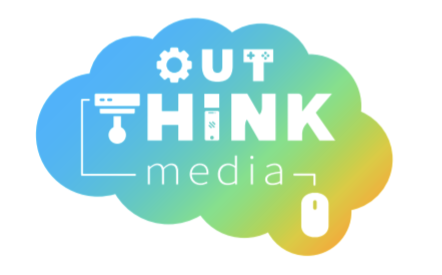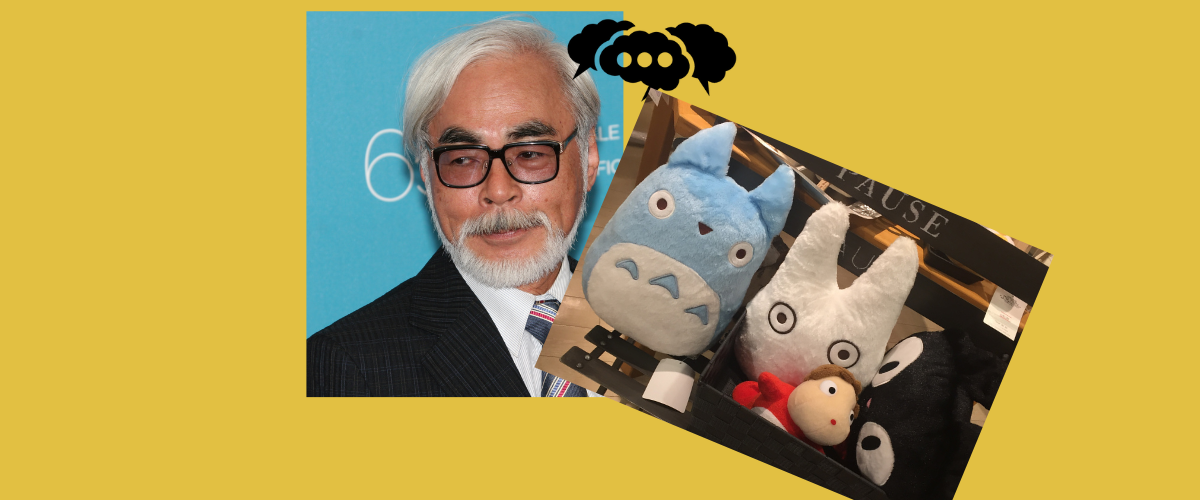OutThink Media supports the SAG/AFTRA strike. For every article posted on OutThinkMedia.com that was produced or otherwise by a struck company, we will donate to @alifeinthearts , which directly aids those on strike. Read our full SAG/AFTRA Strike statement and how striking artists advocate for child actors too.
I’m on the new Brightline train to the Miami Film Festival to see Miyazaki’s new film, The Boy and the Heron, and I can’t stop thinking about the cat bus.
Miyazaki has always maintained that he makes movies for children, primarily because he feels that you cannot change your mind or your ways once you reach adulthood. Characters like Mei in My Neighbor Totoro “have not had their childhood violated by adult common sense,” Miyazaki has stated. However, as much as people say his films are anti-war or pro-environment, Miyazaki claims to never start from that place but instead storyboards while he creates each film’s story.
My Neighbor Totoro and Taking Your Time
This is one of those movies my father shoved into my hands at one of his visits. “Give it a chance,” he assured me. I had two kids under three at that point, and Totoro was just perfection.
They had me at Soot Sprites; it was a lovely way to unwind from a hectic day of playdates and working from home, from setting up and cleaning up from painting adventures, and just from life in general.
At the time we watched Totoro daily, we were also bombarded by high-action, quick edits, and animation that often talked down to children. You had your Daniel Tigers and Toy Storys, of course, but some days, they could not compete with Paw Patrol.
“My films are about beauty. Beauty otherwise unnoticed.”
Hayao Miyazaki
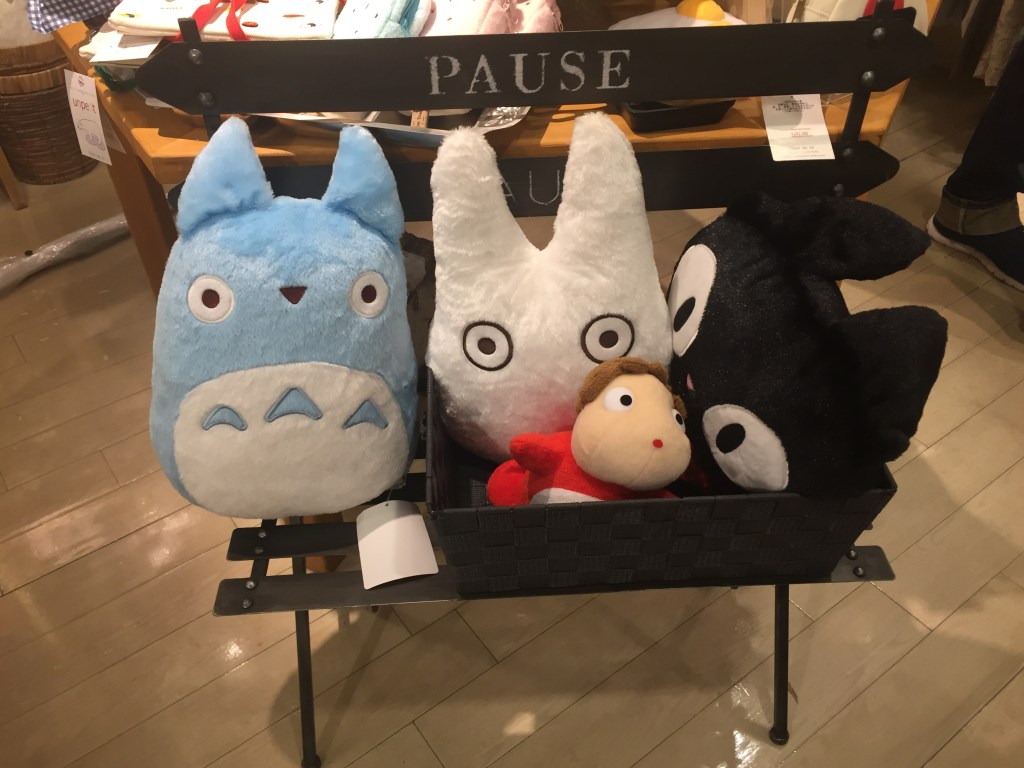
Totoro takes its time in all elements: there is no exposition per say, except when the father might need help from their new neighbor. And everything about the first scenes hit me hard (any stories about moving do): sprites welcoming new residents to their home, young footsteps exploring a new ground plan, the father setting up his home office with piles of books and papers upon papers, the first day at a new school. At the time when I felt like I lived in my car, their slow and careful exploration of their surroundings and getting lost through natural tunnels helped me relax.
Living While Waiting for Death
We never know why their mother is sick. We assume it is something like tuberculosis, especially since Miyazaki’s own mother grew sick and died from the disease, imprinting on his soul the concept of being useful, of living life fully so that you deserve to live.
If I can entertain people, maybe I deserve to exist. I have this repressed need to feel useful.”
Hayao Miyazaki
Totoro doesn’t focus on their mother’s illness for the story. Rather, we dwell on how her family lives while she’s in the hospital. They move just to be closer to the hospital. Their father must work some days from home and some days take a bus, then a train, and walk to work. Satsuki makes lunch for her family, taking on the mother role. The brilliance of her father’s reaction when simultaneously surprised, proud of her, and embarrassed that his 9-year-old must act like an adult, is perfection.
Satsuki does feel the stress of her mother’s illness, but as a slow burn that culminates when Mei runs off and cannot be found. It is a much more realistic portrayal of the stress of death looming over anyone’s life when a loved one is ill.
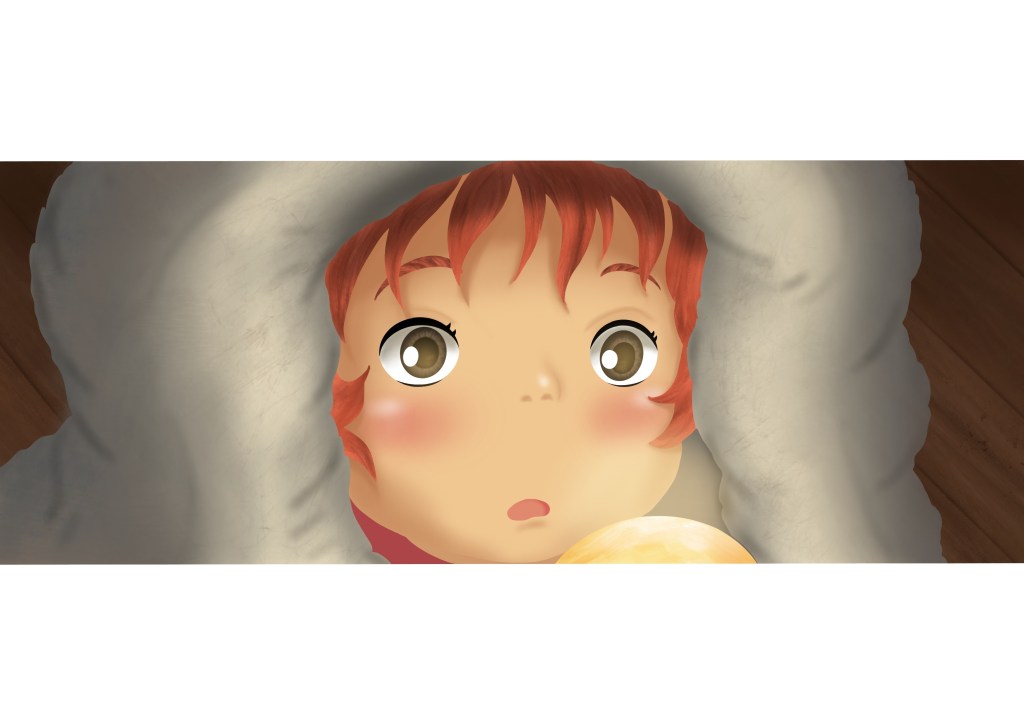
Ponyo and the Mom Who Felt Too Close
The strange film Ponyo is chock full of messages: ecology, human damage to the earth, empathy, compassion, the quality of life for seniors (one of whom is happily voiced by Betty White), and friendship.
The moment when I bolted upright in recognition, however, is when the mother gets mad at the dad for extending his time working away from the family, yells at him through Morse code, then goes to the frig and opens a beer can. Just like the dad in Totoro, these small moments are so raw and based in reality that any parent can understand their plights. This must have been normal for Miyazaki, too, seeing how his very talented wife Akima Ota left her career in animation because they started a family as his star was rising. He has often expressed regret that he was never home, always working.
It was also never lost on me how my 3-year-old looked at the mom in Ponyo, looked back at me (probably holding a beer), and showed a clear understanding. His Dad worked away from us often at that time, and he’s always been very sympathetic to the stress this put on me.
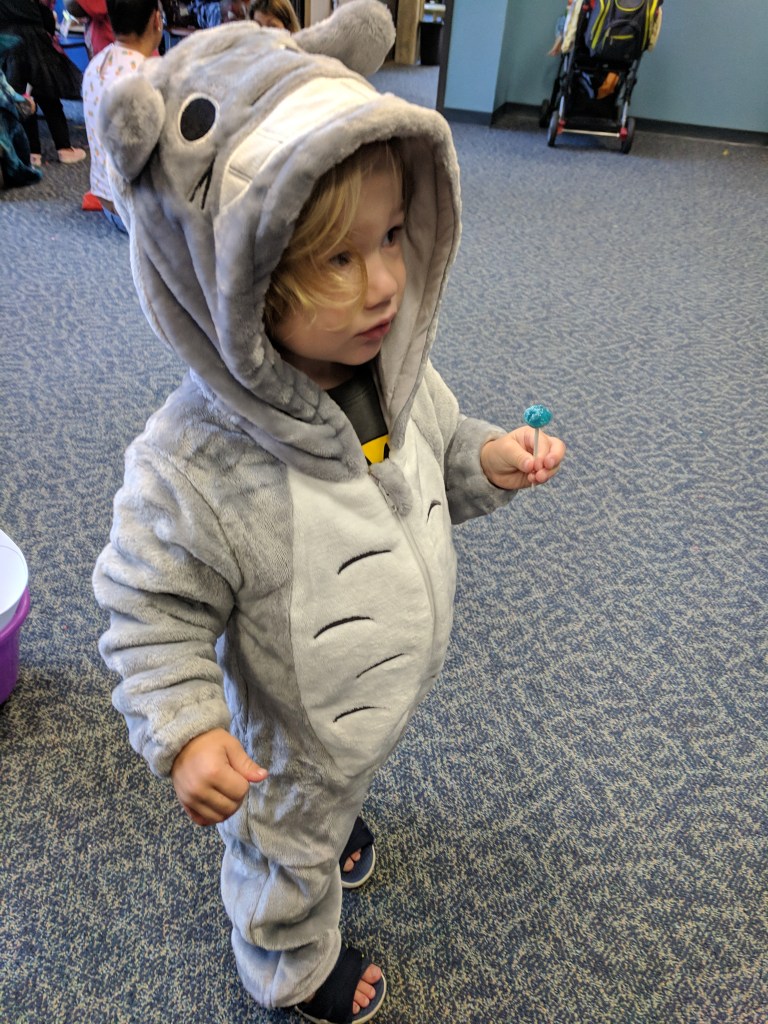
Humans Destroying Our World
Both Totoro and Ponyo connect the children in their film to nature: the young Sosuke saves Ponyo when she is stranded on the beach. Satsuke and Mei may miss their mom and where they used to live, but it’s overshadowed by meeting the Totoros, who help their gardens and imaginations grow. Ponyo’s father, a human sorcerer, created a helmet so he could live underwater and clean the messes that humans leave (while also watching his baby fish. Just go with it).
Even if he doesn’t set out to make films about how we’re ruining the planet, Miyazaki’s stories certainly do make children consider the consequences of everyday life in our world. Anyone remember the river spirit with the disgusting mess he had to clean at the bathhouse?
These are great introductions to help our families understand how we can make small changes in our lives to reduce the plastic and trash we consume. But what if they ask for more info? The older our kids get, the more questions they’ll have. So, how to answer?
- Start by streamlining the message to one sentence: Everything we do and everything we consume is directly related to and affects our planet’s natural balance.
- We live in an ecosystem, meaning living things encounter and interact with non-living things like soil, atmosphere, water, heat, and sunlight. Some interactions are necessary for survival & others are excessive.*
- Trash is the easiest example. An old friend would say that “there is no ‘away.’” Throwing something ‘away,’ only means that we move it from one part of the world to another, typically out of OUR sight in the Western world. Show them the Great Pacific Garbage Patch, explain how that comes directly from the trash that the world consumes, and how it changes our oceans.
- This trash pile causes animals to get tangled or eat plastic. It stops sunlight from reaching algae, which disrupts the food chain even more. Sea plants produce 70% of the oxygen we breathe and can also be ingredients for life-saving medicines. So when we throw out multiple bags of trash, we mostly throw it into the ocean, burying it or possibly burning it, which causes air pollution.
*It’s important to know how the products we choose, the baths that we take, and the lights we leave on can affect and change our planet. But individuals can only do so much. We must also advocate for and elect leaders who take the climate crisis seriously. You can show children the examples of Greta Thunberg and Ou Hongyi, who demand their governments and elders DO something. Find a climate march in your area. Organize park and street clean-ups with your local city hall.
No matter where you live, going into and slowing down enough to appreciate nature is the first step your family can take toward reversing the damage we’ve inflicted on our world. And Miyazaki’s films are a beautiful introduction to why it is necessary.
Next up: my review of Miyazaki’s new film The Boy and the Heron.
Read more: The Perils of Writing About Our Kids: A.A. Milne, Christopher Robin, and Family Vloggers
Photo/Image Credit: Cindy Marie Jenkins, Canva, & Shutterstock
Read our full SAG/AFTRA Strike statement and how striking artists advocate for child actors too.
Sources:
- Contributors, “Thunberg: Who is Greta the Climate Activist and What Has She Achieved,” BBC News, 18 October 2023, https://www.bbc.com/news/world-europe-49918719.
- Myers, Steven Lee, “Ridiculed in China: Ou Hongyi Wages a Lonely Climate Crusade,” New York Times, 4 December 2020, https://www.nytimes.com/2020/12/04/world/asia/ou-hongyi-china-climate.html.
- Hayao Miyazaki Research playlist, OutThink Media on YouTube, https://youtube.com/playlist?list=PLL2ZjKolsEExljGk3g7SpchD3ViuFb_z2&si=rwZH_fP1h-Pl8PN9.
Discover more from I watch YouTube so you don't have to.
Subscribe to get the latest posts sent to your email.
